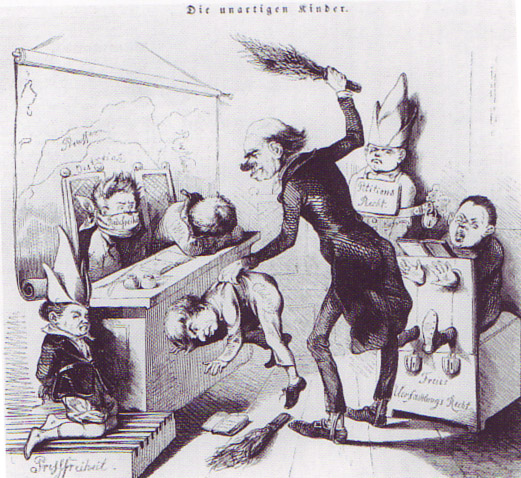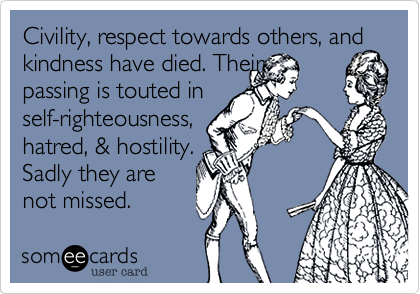As bar president, Lefebvre gets his own column, the “President’s Message.” And I’d given him an atta-boy for his unprecedented criticisms of the state of legal education and especially, for his remarks about the unauthorized practice of law. More recently, he’d decried the state’s medical marijuana law calling it reefer madness.
![Catherine Cortez Masto.jpg]()
Nevada Attorney General Catherine Cortez Masto
But what was he thinking when he decided to go editorially commando with his latest “President’s Message: Dereliction of Duty … Or is it Rule by the Guardians?”
Unhappy with Nevada Attorney General Catherine Cortez Masto’s decision not to defend Article 1 Section 21 of the Nevada Constitution, Lefebvre offered up his ten cents’ worth of opinion and earned himself back $100 dollars worth of grief. Section 21 is known as the “Limitation on recognition of marriage.” It was passed 14 years ago and states, “Only a marriage between a male and female person shall be recognized and given effect in this state.”
Lefebvre’s arguments, however, were mostly legalistic and reminiscent of the 2011 brouhaha when King and Spaulding backed out of defending the federal Defense of Marriage Act.
For the record, I disagree with him on the merits. And until the US Supreme Court steps in, so do the courts. As of last week, with state officials in Oregon and Pennsylvania opting like Cortez Masto not to challenge court decisions overturning bans on gay marriage, there are now 19 states where same-sex couples can be granted legal recognition. See “Same-Sex Marriage Supporters Keep Up Their Winning Streak.”
![Angry businessman yelling into bullhorn 1]() Speaking his mind.
Speaking his mind.
But no matter the substance — damn him for his “tone” or so we’re supposed to believe from those “powerful, vengeful people among the elite” Lefebvre ‘disrespectfully’ opined about. So much for candor, for speaking your mind — and for hanging yourself with the PC police.
At least Nevada’s soon-to-be-gone bar el presidente belatedly learned albeit at the end of his term why state bar presidents confine their bar magazine epistles to insipid interjections, inoffensive insights and doggerel defenses of the self-satisfied status quo.
Coincidentally, about the same time Lefebvre was stepping on himself in Nevada, his counterpart in Arizona was innocuously blathering about diversity in his own presidential column. Doubtless he was prompted by the loony Arizona Legislature’s attempted passage of SB 1062, a bill that allowed businesses to assert their religious beliefs to deny service to gay and lesbian customers.
But unlike the non-wishy-washy Lefebvre, the Arizona honcho didn’t say anything about the legislation let alone anything overtly or substantively controversial. Instead it was the standard mealy-mouthed bar presidential schtick — the usual cheerleading self-congratulation about how great the state bar is in Arizona.
![Boy with his hands on his face uid]() Leastwise the sycophantically impressed Arizona bar magazine editor gushed and saluted his president for not writing about a controversial topic in a member magazine. Like playing it safe takes courage.
Leastwise the sycophantically impressed Arizona bar magazine editor gushed and saluted his president for not writing about a controversial topic in a member magazine. Like playing it safe takes courage.
Perhaps the bar prez was mindful of running afoul of Keller v State Bar of California, which is ‘supposed’ to keep mandatory bars from engaging in ideological political activities with member’s compulsory dues.
Objecting over style but really mad about substance.
So back in Nevada, faculty and staff members at Nevada’s Boyd School of Law were via open letter galvanizing against“the tone” of Lefebvre’s commentary. And with their own immoderation, criticized him for his purported ‘incivility’ over Cortez Masto’s unwillingness to defend the state constitution. Imagine that, lawyers condemning lawyer incivility.
![http://upload.wikimedia.org/wikipedia/commons/0/03/Book_of_Snobs_XVIII-page_69.jpg]() But I don’t for a second believe their objections were merely about style or lapsed social graces. No — bar presidents aren’t supposed to weigh in on controversial topics — at least not those the legal establishment disagrees with. Moreover, methinks some faculty members were already miffed at Lefebvre for his prior Op-ed criticisms of law schools generally and of “the law student debt scandal.”
But I don’t for a second believe their objections were merely about style or lapsed social graces. No — bar presidents aren’t supposed to weigh in on controversial topics — at least not those the legal establishment disagrees with. Moreover, methinks some faculty members were already miffed at Lefebvre for his prior Op-ed criticisms of law schools generally and of “the law student debt scandal.”
And not like he’d singled out Boyd for any opprobrium. Indeed, as I recall, he rolled over and offered not a smidgen’s worth of reproach of the Silver State’s only law school. In fact, he contorted backwards and complimented the law school dean. File this under “no good deed goes unpunished.”
______________________________________________________________________________________
![http://upload.wikimedia.org/wikipedia/commons/thumb/c/c0/Gerard_ter_Borch_%28II%29_-_Officer_Writing_a_Letter_-_WGA22151.jpg/448px-Gerard_ter_Borch_%28II%29_-_Officer_Writing_a_Letter_-_WGA22151.jpg]() “RESPONSE BY MEMBERS OF THE BOYD SCHOOL OF LAW FACULTY AND
“RESPONSE BY MEMBERS OF THE BOYD SCHOOL OF LAW FACULTY AND
STAFF TO ALAN LEFEBVRE’S “MESSAGE FROM THE PRESIDENT”
“As members of the faculty and staff of UNLV’s William S. Boyd School of Law, we were dismayed to read the May 2014 Nevada Lawyer column by Alan J. Lefebvre, written in his capacity as President of the State Bar of Nevada. We fear that the tone of Mr. Lefebvre’s undignified column brings disrespect on the Bar and undermines principles of professionalism that we endeavor to instill in our students.
“Mr. Lefebvre’s ostensible subject was Nevada’s prohibition on same-sex marriage. He disparaged the conclusion by Attorney General Catherine Cortez Masto and endorsed by Governor Brian Sandoval that the ban cannot be defended in federal court. There are reasonable debates to be had about how our state’s officials should respond to a rapidly shifting legal landscape. But such debates require a climate of mutual respect. The mission of the State Bar of Nevada is, in part, to “elevate the standard of honor, integrity, and courtesy in the legal profession” and “to promote a spirit of cordiality” among lawyers. In our roles as faculty and staff at Nevada’s only law school, we want to pass these values on to our graduates. It is thus regrettable that Mr. Lefebvre’s essay consists largely of insults, ad hominem attacks, sarcasm, and sectarian references that are simply inappropriate for the leader of an important institution in a vibrant and diverse state.
“We recognize that issues like marriage equality naturally inspire passionate responses. But in the legal profession passion must be expressed with dignity and thoughtful analysis. Mr. Lefebvre’s column was lacking in the civility that should guide the behavior of every Nevada attorney. It is a serious disappointment for such indignity to emanate from the leader of the state bar.”
_____________________________________________________________________________________
![Poster2]() Blogger, Boyd faculty member and letter signatory Professor Nancy Rapoport also posted exceptions to the strident solitary defense Lefebvre garnered from Ed Whelan at National Review Online entitled “Nevada Law Profs (and Others) vs. Rule of Law—Part 1 ….“
Blogger, Boyd faculty member and letter signatory Professor Nancy Rapoport also posted exceptions to the strident solitary defense Lefebvre garnered from Ed Whelan at National Review Online entitled “Nevada Law Profs (and Others) vs. Rule of Law—Part 1 ….“
Besides objecting to Lefebvre’s “tone,” Professor Rapoport also called Whalen out on his ‘disrespect.’ Oxymoronically, she advocated passionate politeness or was it polite passion? The professor even offered to debate Whalen — privately or publicly.
![Air Bourne.gif]() Rather incongruously, the Nevada Bar’s Board of Governors was compelled to pile on notwithstanding there already exist boilerplate disclaimers in the magazine that “Appearance of an article, editorial, feature, column, advertisement or photograph in Nevada Lawyer does not constitute an endorsement by Nevada Lawyer or the State Bar of Nevada unless specifically identified as the policy of the State Bar” and that “the views expressed are those of the authors.”
Rather incongruously, the Nevada Bar’s Board of Governors was compelled to pile on notwithstanding there already exist boilerplate disclaimers in the magazine that “Appearance of an article, editorial, feature, column, advertisement or photograph in Nevada Lawyer does not constitute an endorsement by Nevada Lawyer or the State Bar of Nevada unless specifically identified as the policy of the State Bar” and that “the views expressed are those of the authors.”
![http://upload.wikimedia.org/wikipedia/commons/thumb/5/5a/Bus_Rear_Wheel_-_Kolkata_2006-03-22_04013.JPG/320px-Bus_Rear_Wheel_-_Kolkata_2006-03-22_04013.JPG]() I guess Keller, the faculty letter, and complaints from interest groups forced the Board to back the PC bus tire over their president. Thursday afternoon, they sent the following blast email to their members.
I guess Keller, the faculty letter, and complaints from interest groups forced the Board to back the PC bus tire over their president. Thursday afternoon, they sent the following blast email to their members.
______________________________________________________________________________________
“State Bar of Nevada
Statement from the Board of Governors
“To all members of the State Bar of Nevada:
“The views expressed in the President’s Column in the May 2014 issue of the Nevada Lawyer do not represent those of the Board of Governors, its individual members, or the State Bar of Nevada as a whole.
“The State Bar of Nevada and the Board of Governors embrace and welcome viewpoints of every kind and the Board assures all of our members that diversity and tolerance are valued and respected by the State Bar.
“The Board of Governors assures all members of the Bar and the public that the State Bar of Nevada does not support any use of the President’s Column for political statements. The Board has a policy that requires the State Bar President to refrain from using the Nevada Lawyer to advance personal political viewpoints.
“The Board of Governors assures all members that we will be diligent in representing you in an unbiased manner.”
______________________________________________________________________________________
Oh the ironies.
Most lawyers I know don’t bother reading the presidential pabulum published in bar magazines. So ironically, but for the outsized attention generated by law school faculty and staff, very few would’ve noticed Lefebvre’s commentary.
![photo]() The even greater irony, however, is that as it is, lawyers don’t have the Free Speech rights everybody else has. Lawyer free speech is limited by ethical rule – a topic I’ve often posted on, e.g., here and here and here. So it’s sad that when lawyers dare to state their opinions in such public ways, they need to also remember to duck before the first shoe gets thrown.
The even greater irony, however, is that as it is, lawyers don’t have the Free Speech rights everybody else has. Lawyer free speech is limited by ethical rule – a topic I’ve often posted on, e.g., here and here and here. So it’s sad that when lawyers dare to state their opinions in such public ways, they need to also remember to duck before the first shoe gets thrown.
And finally, these days the term civility gets bandied about a lot. And yet civility is no longer an abstract principle but has come to mean what’s subjectively polite in the eye of the beholder. But unfortunately, the extension of aspirational courtesies and respectful considerations has become increasingly dependent upon who’s the one being gored.
![http://www.lamed.blogspot.com/2006_01_01_archive.html]()
_____________________________________________________________
Photo Credits: “Danger: Hot Water Will Scald!” by
Wesley Fryer at Flickr via Creative Commons license requiring attribution; Catherine Cortez Masto, State Attorney General of Nevada, at Wikipedia Commons, public domain; “wise monkeys,” by
Thunderchild7 at Flickr via Creative Commons license requiring attribution;Engraving on wood by W. M. Thackeray himself, for the first edition of The Book of Snobs. Chapter XVIII, “Party-giving snobs” Mr Snob and Miss Smith, at Wikimedia Commons, public domain;”Officer writing a letter,” a
ttributed to Gerard ter Borch at Wikimedia Commons, public domain;
Air Bourne.gif by Matthew Korklan at Wikimedia Commons, public domain; “tata mini bus rear wheel” by
Biswarup Ganguly at Wikimedia Commons via
Creative Commons Attribution 3.0 Unported license;”Speak No Evil,” by Theron LaBounty,
notanyron, via Creative Commons-licensed content requiring attribution and share alike distribution at Flickr; “this cow has an itch,” by
Brent Moore at Flickr via Creative Commons license requiring attribution; bull goring at
www.lamed.blogspot.com
![]()
![]()



 But I’ve got my hackles up. Again, you might say or it’s just a chronic condition. It is, after all, why I use so much hair gel.
But I’ve got my hackles up. Again, you might say or it’s just a chronic condition. It is, after all, why I use so much hair gel.
 But trying to reform and transform your friendly state bar may be worth losing some sleep — even if I’m ultimately tilting at windmills.
But trying to reform and transform your friendly state bar may be worth losing some sleep — even if I’m ultimately tilting at windmills.






 Talk about timing. No sooner did I say
Talk about timing. No sooner did I say 



 But I don’t for a second believe their objections were merely about style or lapsed social graces. No — bar presidents aren’t supposed to weigh in on controversial topics — at least not those the legal establishment disagrees with. Moreover, methinks some faculty members were already miffed at Lefebvre for his prior Op-ed criticisms of law schools generally and of “the law student debt scandal.”
But I don’t for a second believe their objections were merely about style or lapsed social graces. No — bar presidents aren’t supposed to weigh in on controversial topics — at least not those the legal establishment disagrees with. Moreover, methinks some faculty members were already miffed at Lefebvre for his prior Op-ed criticisms of law schools generally and of “the law student debt scandal.” “RESPONSE BY MEMBERS OF THE BOYD SCHOOL OF LAW FACULTY AND
“RESPONSE BY MEMBERS OF THE BOYD SCHOOL OF LAW FACULTY AND

 I guess Keller, the faculty letter, and complaints from interest groups forced the Board to back the PC bus tire over their president. Thursday afternoon, they sent the following blast email to their members.
I guess Keller, the faculty letter, and complaints from interest groups forced the Board to back the PC bus tire over their president. Thursday afternoon, they sent the following blast email to their members.








 I’d meant to post about Arizona escaping the list of this year’s
I’d meant to post about Arizona escaping the list of this year’s 



























 I love juxtapositions. It’s an odd personality trait. Or maybe, it’s the heat. Or it’s niggling sleep deprivation now that I’m up earlier than usual — before 4:30 AM to walk our dogs before the summer sun scorches paws and dehydrates lolling tongues. It clears 90°F before 8 AM.
I love juxtapositions. It’s an odd personality trait. Or maybe, it’s the heat. Or it’s niggling sleep deprivation now that I’m up earlier than usual — before 4:30 AM to walk our dogs before the summer sun scorches paws and dehydrates lolling tongues. It clears 90°F before 8 AM.





 But besides working as a senior justice, he also has a personal blog called
But besides working as a senior justice, he also has a personal blog called  Maybe if the now retired 70-year old Federal Judge
Maybe if the now retired 70-year old Federal Judge  It’s not like Judge Kopf hasn’t been here before. A self-described “dirty old man ever since I was a very young man,” he got people worked up just a few months ago when he posted
It’s not like Judge Kopf hasn’t been here before. A self-described “dirty old man ever since I was a very young man,” he got people worked up just a few months ago when he posted  Filters? What filters?
Filters? What filters?
 Unabashed, she said,
Unabashed, she said,  Which gets me back to Judge Kopf. In his latest post,
Which gets me back to Judge Kopf. In his latest post, 







 John Lennon was right. “Life is what happens when you’re busy making other plans.” Not long after I ate a couple of yellow nectarines yesterday afternoon, I got a robocall. It was from the big box store where I’d purchased the fruit.
John Lennon was right. “Life is what happens when you’re busy making other plans.” Not long after I ate a couple of yellow nectarines yesterday afternoon, I got a robocall. It was from the big box store where I’d purchased the fruit. 











 It was that some of the lawyers in that room didn’t like their clients. These lawyers spent their break time loudly commiserating about their clients.
It was that some of the lawyers in that room didn’t like their clients. These lawyers spent their break time loudly commiserating about their clients.








 But as for that task force on mission and governance, don’t expect meaningful reforms. Thirty-six percent of the task force is composed of former members of the Bar’s board of governors. Indeed, four of these five former governors are also past state bar presidents, including the immediate past president. He was instrumental in ramrodding through an unnecessary 13% dues increase to preserve business as usual. Moreover, the “consultant” to the Task Force is the Bar’s current CEO. A mission and governance review with such guiding lights is like hunting with the game warden.
But as for that task force on mission and governance, don’t expect meaningful reforms. Thirty-six percent of the task force is composed of former members of the Bar’s board of governors. Indeed, four of these five former governors are also past state bar presidents, including the immediate past president. He was instrumental in ramrodding through an unnecessary 13% dues increase to preserve business as usual. Moreover, the “consultant” to the Task Force is the Bar’s current CEO. A mission and governance review with such guiding lights is like hunting with the game warden. I was thinking of incivility again. Maybe, it was prompted by reading Kathleen Geier’s
I was thinking of incivility again. Maybe, it was prompted by reading Kathleen Geier’s  Sure Rivers often crossed lines of etiquette, taste and civility. Sure she was politically incorrect. But oh the rich irony of critiquing someone for incivility — uncivilly.
Sure Rivers often crossed lines of etiquette, taste and civility. Sure she was politically incorrect. But oh the rich irony of critiquing someone for incivility — uncivilly.





 “When somebody says it’s not about the money — it’s about the money.” - H.L. Mencken
“When somebody says it’s not about the money — it’s about the money.” - H.L. Mencken
 To be fair, there’s talk here of possible exemptions for non-profits and local organizations
To be fair, there’s talk here of possible exemptions for non-profits and local organizations 





 Whether there’s enough fiscal good sense left among the Bar’s Board of Governors to stop the proposal remains to be seen.
Whether there’s enough fiscal good sense left among the Bar’s Board of Governors to stop the proposal remains to be seen.

